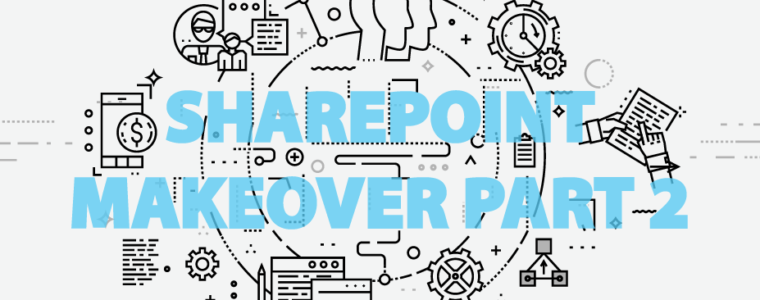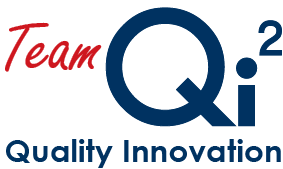
Why Does Microsoft SharePoint®
Fail to Deliver?
SharePoint is a complex tool used to address several areas including Content/Knowledge Management, Business Intelligence, Process and List Tracking, Workflows, Forms, Navigation and Search, and Wikis.
“IT centric” installations focus on the technology without much consideration of user or organizational needs. These installations do not typically include role-based training, organizational adoption or change management.
Another reason that SharePoint is blamed for not delivering business results is the lack of:
- Process – no process for document management, how/when/who cleans up data, etc.
- Planning – they don’t allocate enough hardware or places to develop/test
- Framework for support – This includes admin support, user training, and flexible policies
One common failure point for SharePoint® occurs when an organization’s legal or contracts teams are not included in the understanding and planning of the installation. This can lead to a lock down of what people can do or see without understanding how SharePoint can manage and secure information. Finally, SharePoint implemented “out of the box” experience and navigation is not intuitive or appealing, and doesn’t meet the true needs of the organization.
Business and Requirements Makeover Analysis – Step 1
Is there a gap between how your systems currently work and how they need to work for your organization and its users? Does your organization need to define how a new system should operate in order to meet organizational goals and user needs? Effective analysis will help your organization use technology effectively and allow you to incorporate rapidly changing technologies into existing systems. We literally “wrote the book” on user-centered business and system requirements (User-Centered Requirements: The Scenario-Based Engineering Process, McGraw & Harbison); we specialize in developing usable requirements that drive value by a consistent focus on outcomes and the appropriate involvement of users and stakeholders.
Qi2’ business and systems requirements analysis service has helped organizations ensure that systems and technologies work for their users. As our name suggests, we operate with some of the best people and technology minds in the industry, and we understand the importance of defining systems correctly. Activities we provide within this service area include:
- Conducting feasibility analysis for new systems
- Interviewing users and stakeholders to understand and document the goals of the system
- Modeling the functionality of the system
- Specifying inputs that the system will access, deciding how inputs will be processed, and formatting output to meet users' needs
- Using data modeling techniques, including the creation of the entity relationship diagram
- Preparing specifications, flow charts, and process diagrams for programmers to use
- Determining hardware and software requirements
- Developing road maps for deploying Microsoft® technologies, including SharePoint® Planning Deployment Services, for which we accept Microsoft vouchers.
Sharepoint Makeover Design and Development – Step 2
Has your "out-of-the-box" SharePoint implementation delivered desired results? Qi2 makes SharePoint work and add value for your organization. Let us do a SharePoint "makeover" to develop a rich, intuitive portal environment that works for your users and helps you achieve your business goals.
Qi2 has designed and developed SharePoint portals and sites that work for commercial and government organizations of all sizes. We bring together a team of information architects with human factors expertise and SharePoint specialists to design and develop SharePoint portals and content management systems. We understand how to design SharePoint to make it easier to use and implement across the organization and government agency.
The Qi2 team uses an agile approach that includes:
- Quickly gathering and documenting use-based requirements and business objectives, including current barriers to success
- Capturing your information architecture and organization needs and converting those into suggestions for layout, clustering of links, documents and templates, etc.
- Working with your communications staff to understand internal and external branding requirements
- Conducting configuration planning sessions to tailor the processes and components of the tool to accurately reflect customer and user requirements
- Producing graphical prototypes that represent alternatives, to get early feedback and direction
- Selecting and integrating web parts or designing new web parts to accomplish design, usability, and business objectives
- Incremental design, review, and test cycles to enable more rapid development and allow for changes early in the process
- Piloting with a small group to ensure usability
- Developing custom-designed user training (optional but highly recommended)
Our customized SharePoint portals enable you to build community, manage business processes and workflows from within SharePoint, and lay the groundwork for improved productivity.
Content Management - Step 3
Move from document and information chaos to true content management and put your content to work for you. Qi2 set up a SharePoint® content management solution for many government agencies to improve on existing processes to truly make SharePoint® a collaborative experience.
Far too often, organizations purchase SharePoint® with intentions of using it for content management, then use it as nothing more than a fancy file server. In this case, information and documents quickly become poorly organized, resulting in ineffective search and information access, and poor user acceptance and use.
When designed and configured with users needs and organizational goals in mind, however, content can be managed to achieve business goals. Qi2 can implement SharePoint Content Management 2013 and deliver the following benefits to you and your organization:
- Increase information value by making it easier to tag documents and manage metadata. SharePoint® 2013 provides features for capturing metadata and connecting it to the underlying content. For example, the managed metadata service allows for the definition of content types that can be reused across site collections and sites.
- Improve productivity and "searchability" by making it easier to find needed information. SharePoint® 2013 enables you to create organizational taxonomies. Incoming electronic documents can then be categorized (in an automated fashion or by users) for future retrieval.
- Drive compliance and reduce risk by tagging content, enforcing retention schedules and applying legal holds. SharePoint® 2013 can integrate compliance into your business, enabling you to ensure that proper business practices are followed and that content is properly captured, stored, managed, and disposed of at the appropriate and legal time in its lifecycle.
- Speed up common processes such as RFP responses by managing related content as a single entity in a site collection. This saves time and makes sure no appendix or other document gets left behind.
- Eliminate time-sucking "chaos creep" by managing and retiring documents and records that are no longer needed.
Let Qi2 take you beyond using SharePoint® as a file server. Not only are we certified SharePoint® specialists, but we’re also skilled in techniques that improve the success of enterprise content management: knowledge acquisition, content analysis and audits, compliance, and requirements gathering.
Automated Processes and Workflows – Step 4
All businesses depend on business processes; and the most important processes in many organizations depend on people. Use SharePoint® to support process-based human workflow and make your organization more effective.
Qi2 designs SharePoint® workflows to automate the interactions among the people who participate in a process and to improve how that process functions. The result-increased process efficiency and completion rates, with lower error rates.
Processes that can benefit from automated SharePoint® support for human workflow include:
- Approval - A common aspect of human-oriented business processes is the need to get approval from multiple participants. What’s being approved can vary widely from a Word document containing next year’s business plan to a business card order form or an expense report. In every case, specific people must review the information, perhaps appending comments, before they indicate approval or rejection. Automate the approval cycle in SharePoint® to track who has the item, where it's been, and its approval status.
- Coordinating group efforts - Whether it's preparing a response to an RFP, producing a project deliverable, or designing and developing training, many processes require people to work together in an organized way. By defining the steps of the process in an automated SharePoint® workflow, the group’s work can be made more efficient and the process itself more manageable and predictable.
- Issue tracking - Many business processes generate a list of outstanding issues, such as risks or items to be completed. Too often, these are kept in spreadsheets on one person's computer. SharePoint® allows everyone to simultaneously view, edit, and update this list. In addition, an automated SharePoint® workflow can be used to maintain that list, assign issues to the people capable of resolving them, and track the status of resolution.
Respective copyright notice - The company, product and service names used in this web post are for identification purposes only. All trademarks and registered trademarks are the property of their respective owners.
